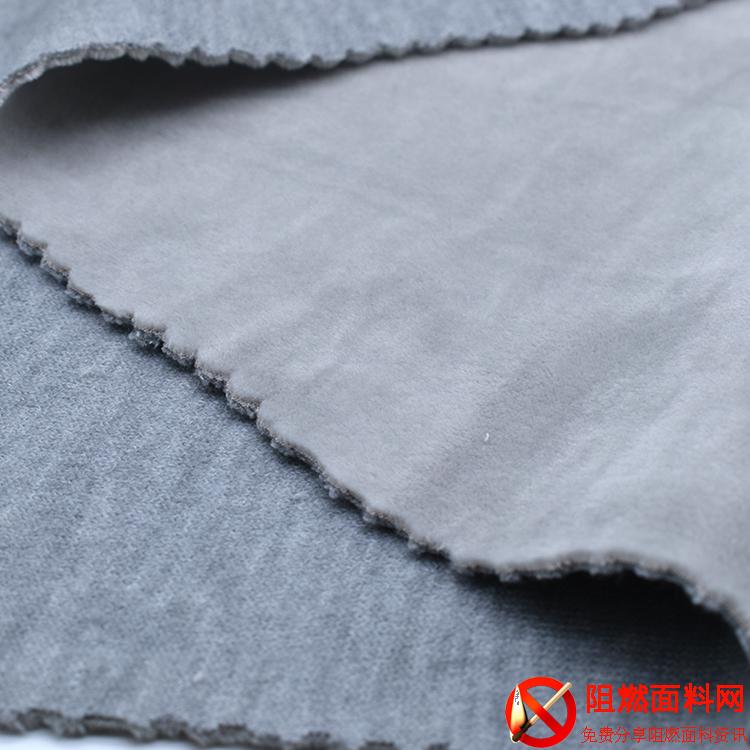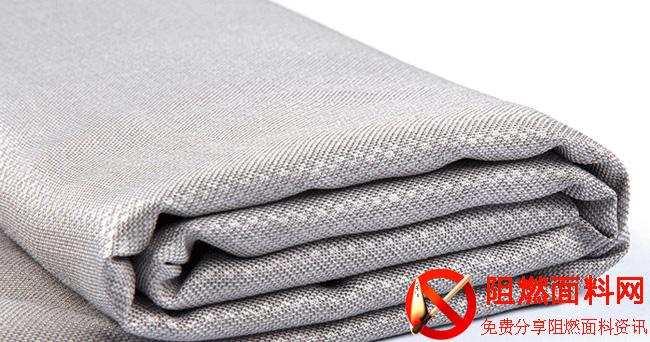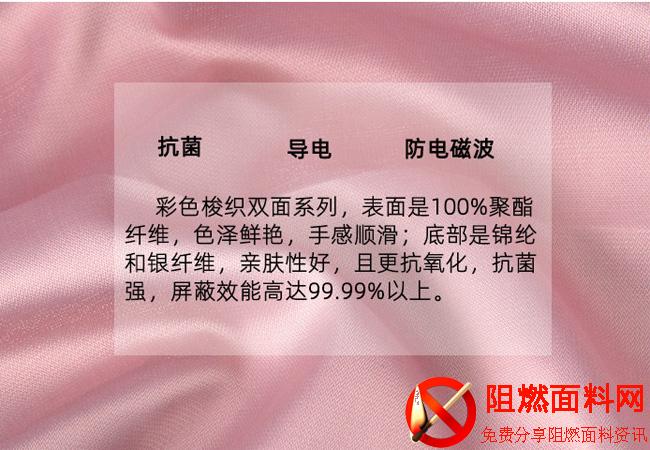Chemical fiber imitation wool, how to imitate it? look here!
Chemical fiber imitation wool, how to imitate it? look here!
Imitation wool fiber
Wool-like fibers use chemical fibers to imitate the style characteristics of wool fabrics to produce chemical fiber fabrics, thereby achieving the purpose of replacing wool with chemical fibers.
Performance requirements of wool-like chemical fibers:
1. The tensile properties of wool-like chemical fibers should be similar to those of wool. Some chemical fibers have excessive breaking power and good toughness, but their anti-pilling performance deteriorates. Therefore, the breaking work of wool-like chemical fibers is not as high as possible, but should be controlled within an appropriate range. It is generally believed that the strength and breaking power of wool-like chemical fibers only need to reach the level of wool.
2. Wool-like chemical fibers should have appropriate curling properties. By curling the wool-like fibers, wool-like curls can be formed, giving the fabric a fluffy, soft, elastic feel and style with a strong wool-like feel.
3. The compression initial modulus of the wool-like chemical fiber aggregate should be appropriately low, the compression density should be moderate or higher, and the compression elastic recovery rate should be high, because compression elasticity is related to the feel, softness, elasticity, and fluffiness of the fabric, etc. Style related.
Technical approach to chemical fiber imitation wool

Wool structure diagram
There are two main technical approaches to imitating wool with chemical fibers: one is to imitate the morphological structure and performance of wool fibers and develop wool-like fibers; the other is to imitate wool fabrics in appearance, style and performance by spinning, The synergy of spinning, weaving, dyeing and finishing processing, etc., produces fabrics with the style characteristics and performance of wool fabrics.
1. Short fiber imitation wool
The short fiber imitation wool is first simulated from the length and fineness of the fiber to make it close to the average length and average linear density of wool, forming special specifications such as 2.75dtex × 51mm; 3.33 dtex × 76mm.
The raw materials of short fiber imitation wool are mainly polyester, nylon, nylon, viscose, etc.
2. Medium and long fiber imitation wool
Medium-length fiber is a kind of chemical fiber with medium cut length. Its length is generally 51-76mm, between cotton type (38-41mm) and wool type (78-124mm).
(1) Brocade type
Viscose is a wool-like fabric produced from the late 1950s to the early 1980s. It is blended with 85% viscose and 15% nylon, and uses wool-type textile dyeing and finishing processes.
(2)Polyester and viscose
Polyester and viscose wool-like fabrics originally entered the domestic market from Japan via Hong Kong, also known as “Quick Bus”. Because polyester and viscose have different excellent wearing properties, blending plays an ideal complementary role and brings into play their respective advantages. The disadvantages are that the wool texture is too poor (the cotton texture is too strong), it is easy to become old and stained, and it can cause scorch holes when exposed to fireworks. Therefore, it quickly declined in the mid-1980s.
(3) Polyester nitriles
Polyester-based wool-like mid-length fabrics have developed to a certain extent. Because they contain a certain amount of acrylic (light specific gravity, good fluffiness, soft and elastic fibers), they are internationally named “synthetic wool”, and the effect of imitating wool has been improved. , however, due to its poor wool-like properties and difficulty in dyeing and processing, it is limited by equipment and uses the separate bath method for processing. The process is long and the processing is complex. It has only been developed in wool and knitwear.

3. Filament imitation wool
Filament imitation wool has developed with the development of its deformation technology. From the 1970s to the 1990s, through various deformation processes, it not only overcomes the problem of smooth surface, dull luster, waxy feeling, and stiffness of filament yarn It has no shortcomings such as waxiness, stiffness, inflexibility and lack of elasticity. It has various characteristics of short fiber yarn and overcomes the shortcomings of short fiber fluffing and pilling. At the same time, thick and thin knots (thick and thin) were developed in the 1990s, making one section of the same monofilament thick and one section thin. Some filament-like wool-like fabrics have undergone amazing development, not only achieving “fake ones” in terms of feel and appearance. level, and the tool has reached a new realm of “simulation and super-realism” in terms of quality and performance.
Production methods of commonly used wool-like chemical fibers
When chemical fibers are imitated from a fiber perspective, they are initially based on the length and fineness characteristics of wool fibers. During the spinning process, the chemical fiber is spun into a length and linear density similar to wool fiber, such as a linear density of 2.5-3.3 dtex and a length of 51-102 mm. Currently, commonly used wool-like chemical fibers include high shrinkage fiber, special-shaped fiber, composite fiber, cationic dye-dyeable polyester, flame-retardant fiber, microfiber, air-textured fiber, mixed fiber, etc.
1. High shrinkage fiber
High shrinkage fibers refer to fibers that can shrink significantly under the action of heat. Common high shrinkage fibers include high shrinkage acrylic and high shrinkage polyester.
(1) High shrinkage acrylic fiber
Since acrylic fiber does not have crystalline and amorphous areas in the strict sense, its ordered structure cannot prevent large-scale thermal motion of the chain segments. Therefore, acrylic fiber has unique thermoelasticity and can produce shrinkage, and can produce acrylic fiber. Textured yarn.
production method
There are two methods for producing high shrinkage acrylic fiber, namely stretching method and chemical modification method. The stretching method is to stretch the fiber macromolecular chain multiple times when it is higher than the glass transition temperature of acrylic fiber, and then orient it along the fiber axis, and then cool it rapidly to temporarily fix the shape and tension of the fiber macromolecular chain. When acrylic is treated in a relaxed state, it causes significant shrinkage of the fiber in the length direction. Chemical modification method is to increase the content of the second monomer methyl acrylate, or use a thermoplastic second monomer to copolymerize with acrylonitrile to reduce the tightness of the arrangement of fiber molecules, which can significantly increase the shrinkage rate of acrylic fiber.
(2) High shrinkage polyester
production method
High shrinkage polyester is generally obtained by modifying crystalline polyester. There are two main production methods: one is to use special spinning and stretching processes. For example, POY yarn can be made through low-temperature stretching, low-temperature setting and other processes. Obtain high shrinkage polyester with boiling water shrinkage of 15%-50%; the other is to use chemical modification method to produce modified copolyester and then spin.
2. Special-shaped fiber
Special-shaped fibers refer to fibers whose cross-sectional shape is non-circular.
Production of special-shaped fibers
Special-shaped fibers are spun with special-shaped spinnerets with non-circular cross-sections. They are generally produced by melt spinning or solution spinning. They are mainly triangular, polygonal, multi-lobed, flat, and hollow. shape and multiple hollow shapes. The purpose is to improve the feel, gloss, hygroscopicity, fluffiness and other properties of synthetic fibers.

3. Composite fiber
Composite fiber is composed of two or more polymers, or the same polymer with different properties, compounded in a certain way. Composite fibers can be made into fibers with special functions such as wool-like high curl, easy dyeing, flame retardant, antistatic, and high moisture absorption. Composite fibers can be mainly divided into side-by-side type, sheath-core type and matrix-fibril type according to the distribution and arrangement of each component in the fiber. Side-by-side composite fibers can be made into crimped fibers by selecting components with different shrinkage rates, so they are widely used in chemical fiber imitation wool.
Development of synthetic fiber wool-like products
The natural curly nature of wool is due to the presence of a bilateral structure of mesocortex and metacortex cells in wool. In order to imitate the crimp characteristics of wool fibers, two components with different shrinkage rates are used when spinning chemical fibers. Side-by-side composite fibers with different shrinkage components on the same fiber cross section can be produced, such as polyamide and Polyester, polyurethane, polyether and polyacrylonitrile are self-curling side-by-side two-component composite fibers. The fiber has good curling durability, fluffiness, resilience and warmth, and the fabric has a smooth and waxy feel. The appearance is natural, gorgeous and elegant, and the imitation wool effect is good.
4. Flame retardant fiber
In order to imitate the non-flammable properties of wool fibers, wool-like chemical fibers can be made into flame-retardant fibers.
Production of flame retardant fibers
Flame retardant fibers are generally produced by copolymerization or blending methods. The copolymerization method uses monomers containing flame-retardant elements (such as Cl. Br, P, etc.) to prepare flame-retardant fiber-forming polymers through copolymerization, and then spins them to obtain flame-retardant fibers. The blending method is to add flame retardant to the spinning melt or solution, mix and spin to produce flame retardant fibers.
At present, commonly used wool-like flame retardant fibers include: flame retardant polyester, flame retardant nylon, flame retardant acrylic, etc.
5. Microfiber
In Japan, fibers with a linear density below 0.3 dtex are called microfibers. Microfiber has the advantages of being soft to the touch and comfortable to wear.
Production of microfibers
There are two main types of ultrafine fibers: direct spinning and composite spinning. The direct spinning method uses the traditional melt spinning method to produce ultrafine fibers. The composite spinning method uses composite spinning technology to spin composite fibers, and then separates the various components in the composite fibers from each other through mechanical or chemical treatment, or uses a solvent to separate one component of the sea-island composite fiber. Dissolve to obtain microfiber.






